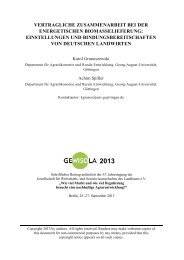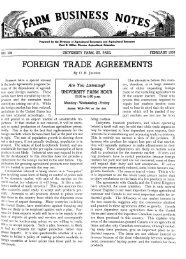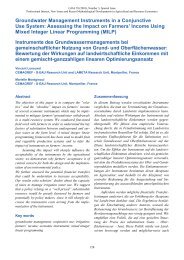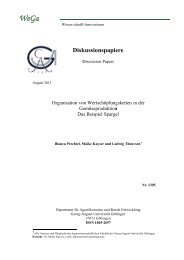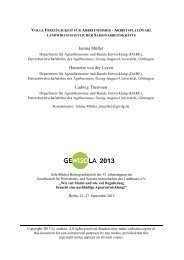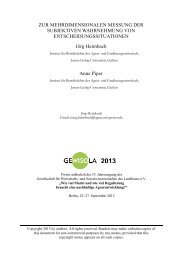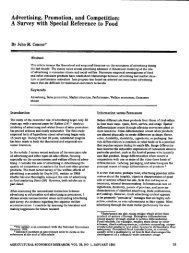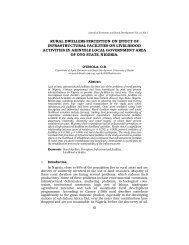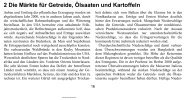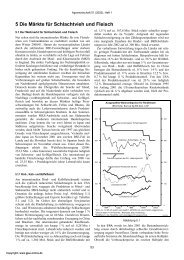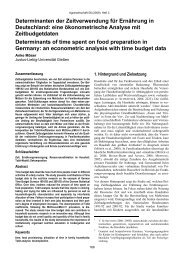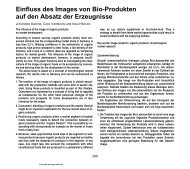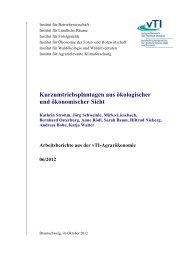District Institutes of Education and Training - Teacher Education
District Institutes of Education and Training - Teacher Education
District Institutes of Education and Training - Teacher Education
You also want an ePaper? Increase the reach of your titles
YUMPU automatically turns print PDFs into web optimized ePapers that Google loves.
<strong>District</strong> <strong>Institutes</strong> <strong>of</strong> <strong>Education</strong> <strong>and</strong> <strong>Training</strong>: A Comparative Study in Three Indian States<br />
<strong>Education</strong>al Technology (ET)<br />
The ET branch conducts training <strong>and</strong> workshops for teachers for developing low<br />
cost teaching learning materials, develops video material for training, <strong>and</strong> provides<br />
technical support to other departments during their programmes. Dhar DIET,<br />
which lacked even the basic technology <strong>of</strong> adequate staff toilets, had not been able<br />
to get funds to have its Xerox machine repaired for six months (personal<br />
communication, 21.6.99) but did have a satellite dish for teleconferencing. Staff<br />
members were unenthusiastic, saying they found the relevance <strong>of</strong> teleconferencing<br />
materials low for their <strong>District</strong>. Indore DIET was also a teleconferencing centre<br />
but it, in contrast, had an active ET branch, whose head was frequently called to<br />
the SCERT to contribute to tele-conferencing programme design. This DIET had<br />
a reputation for strong ET although this expertise remained individual <strong>and</strong> was not<br />
shared to develop an institutional resource.<br />
In Udaipur DIET, the ET branch had developed a series <strong>of</strong> video cassettes <strong>and</strong><br />
transparencies for training teachers in Hindi, Maths, English <strong>and</strong> science teaching.<br />
The research team looked in detail at the English videos. The videos were long,<br />
were not broken up into teaching sequences, <strong>and</strong> were used as an alternative to the<br />
teacher, rather than as a learning aid. The team made various suggestions along the<br />
lines <strong>of</strong> those discussed in chapter 9. These were well received by Udaipur DIET<br />
staff, whose pr<strong>of</strong>essional development in this area had been technically rather than<br />
pedagogically oriented.<br />
Surat DIET had a well established ET branch. One <strong>of</strong> the main uses to which this<br />
had been put was in making links with local TV, so that coverage <strong>of</strong> DIET<br />
activities was regular. This helped the DIET gain <strong>and</strong> maintain a high pr<strong>of</strong>ile <strong>and</strong><br />
visibility for its activities in the <strong>District</strong>. Elsewhere, there was an enthusiasm for<br />
the technology, but there was a tendency to see this technology as an end in itself,<br />
rather than as a means <strong>of</strong> supporting learning.<br />
Curriculum, materials development <strong>and</strong> evaluation (CMDE)<br />
According to the DIET guidelines, the CMDE branch should develop new locally<br />
relevant curricular units in dialects <strong>and</strong> work with the <strong>District</strong> Resource Unit.<br />
There was no evidence across the DIETs <strong>of</strong> work on curriculum development.<br />
Similarly, nothing was to be found in these DIETs on developing the methods <strong>of</strong><br />
formative evaluation that are crucial to the competency-based approach. All<br />
CMDE branches focused on the production <strong>of</strong> teaching-learning materials,<br />
samples <strong>of</strong> which were displayed in the DIET. These teaching-learning materials<br />
generally comprised a single aid rather than multiple sets, <strong>and</strong> were therefore<br />
primarily teaching, rather than learning, aids. Many elaborate teaching-learning<br />
materials were made with only a single application. The DIETs’ approach to<br />
62 DFID



